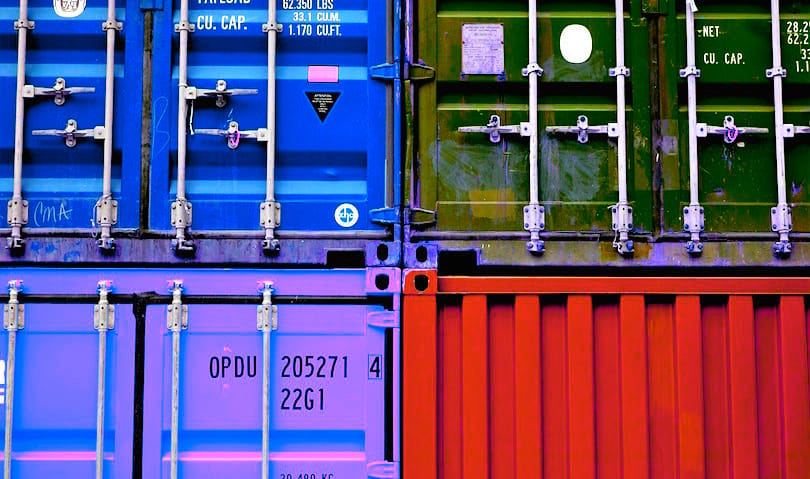
HodlX Guest Post Submit Your Post
Blockchain is regarded as one of the revolutionary technologies that came to light with the advent of Bitcoin by Satoshi Nakomoto in 2009. Based on Distributed Ledger Technology, blockchain allows everyone on the network to view every transaction that happens, thereby providing transparency and immutability. among other advantages.
The implementation of blockchain in financial transactions has been numerous. There has been a surge in the number of cryptocurrencies that have sprung up based on the success of Bitcoin. Applications in the cryptocurrency world range from financial transactions on one side and entertainment on the other, and has cut across multiple industry domains.
On the other hand, the non-crypto-based blockchain has also gained popularity and the industry is seeing a lot of potential in adopting blockchain in real-life scenarios. In this post, we will look at supply chain management, which blockchain impacts in a big way.
Blockchain characteristics
Blockchain technology offers the following
Transparency
Immutability (secure from advertent/inadvertent hack or modification of data)
Shared ledger (or record of transactions)
Due to the sharing possibilities of this technology, there exist numerous opportunities for logistics/supply chain use cases. Consider movement of a container of food materials from source to warehouse or warehouse to customer. The food materials are to be stored in a certain environment (temperature, humidity, pressure, etc.) constantly to ensure freshness.
In a conventional situation, the supplier (source) would store it in a place at a constant setting which may be monitored at all times. However, when the consignment is on the move, this may not be the case. How do all the stakeholders monitor or oversee the compliance with regards to storage and transportation? Blockchain comes into the picture here and provides a way to solve this.
Using blockchain, the stakeholders (supplier, transport handler, customer, auditors) become part of the same network. With the combination of IoT, using sensors for tracking temperature and other parameters, these data are constantly written into blocks which are added to the blockchain network. With the help of native software, the stakeholders have access to these data locally and instantaneously. The availability of data instantaneously speeds up the process of data analysis and any action that may need to be taken thereof.
Advantages
Improvements of transparency and data sharing across the supply chain
Better tracking of orders
Reducing errors and fraud detection
All stakeholders/members of the network are connected and can access data instantaneously
Implementation
When it comes to implementation of a blockchain solution, the key factor is selecting a blockchain technology. This plays an important role in determining how the solution will pan out in the long run. Most of the financial transactions based on blockchain networks rely on crypto blockchains, like the Bitcoin or Ethereum networks, to implement the solution. Some examples are ICOs and crypto trading exchanges.
In the case of logistics and supply chain, where the goal is not to track financial dealings, the ideal option would be Hyperledger, a blockchain framework. Hyperledger is an open-source collaborative effort created to advance cross-industry blockchain technologies. It is a global collaboration, hosted by the Linux Foundation, including leaders in finance, banking, IoT, supply chain, manufacturing and technology.
The most used framework is Hyperledger Fabric. The user interface could be a web application or a mobile application which provides functionalities that enable the user to interact with the blockchain. The blockchain consists of transactions grouped in a block, and a chain of blocks forms the blockchain network.
At the heart of the blockchain network is the business logic also known as “chain code” or smart contract which defines how and what gets into a transaction before it gets into a block. The network of nodes then intelligently computes and adds the block to the network, and also the added block is propagated to all the attached peers in the network. The user interface and the chain code are linked through application program interface functions (APIs). These APIs allow reading and writing of data from and to the blockchain to carry out various actions on the user interface.
Other Use Cases of Blockchain in Supply Chain
Tracking of orders, receipts, shipment notifications and other trade-related documents
Asset digitisation by combining with IoT and providing digital signatures to assets
Information sharing about the manufacturing process, assembly, delivery
Compliance for maintenance of products with suppliers and vendors
Disclaimer: Opinions expressed at The Daily Hodl are not investment advice. Investors should do their due diligence before making any high-risk investments in Bitcoin, cryptocurrency or digital assets. Please be advised that your transfers and trades are at your own risk, and any loses you may incur are your responsibility. The Daily Hodl does not recommend the buying or selling of any cryptocurrencies or digital assets, nor is The Daily Hodl an investment advisor. Please note that The Daily Hodl participates in affiliate marketing.
The post Blockchain Impact on the Logistics Industry appeared first on The Daily Hodl.




